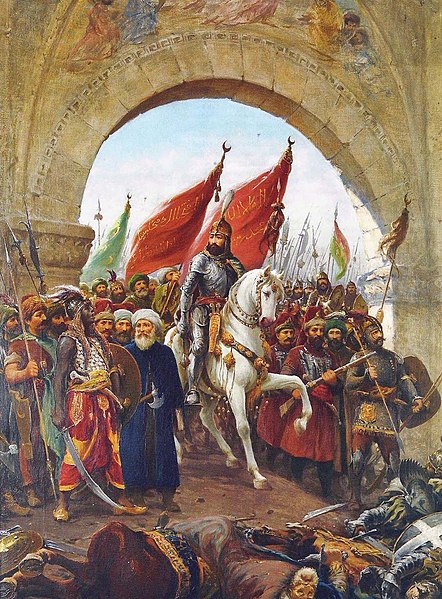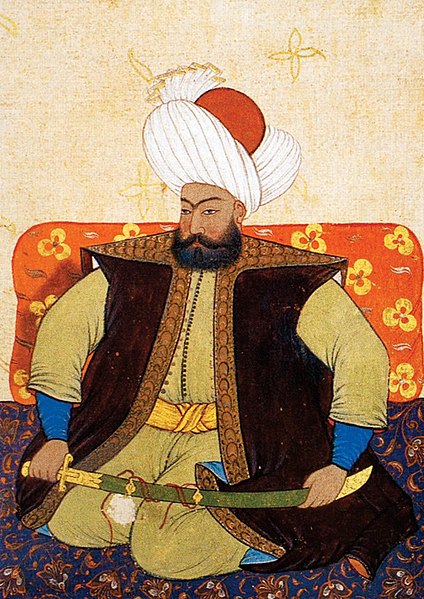A series of military conflicts between the Ottoman Empire and various European states took place from the Late Middle Ages up through the early 20th century. The earliest conflicts began during the Byzantine–Ottoman wars, waged in Anatolia in the late 13th century before entering Europe in the mid-14th century with the Bulgarian–Ottoman wars. The mid-15th century saw the Serbian–Ottoman wars and the Albanian-Ottoman wars. Much of this period was characterized by the Ottoman expansion into the Balkans. The Ottoman Empire made further inroads into Central Europe in the 15th and 16th centuries, culminating in the peak of Ottoman territorial claims in Europe.
The relief of Vienna by Frans Geffels
Conquest of Constantinople by Sultan Mehmed the Conqueror in 1453
1475 miniature of the Battle of Nicopolis by Jean Colombe called Les Passages d'Outremer, BnF Fr 5594
Clockwise, from top left: The Battle of Hermannstadt, The Battle of Varna, The Battle of Kosovo, The Siege of Belgrade, The Battle of Breadfield, The Battle of Mohács
The Ottoman Empire, historically and colloquially known as the Turkish Empire, was an imperial realm that spanned much of Southeast Europe, West Asia, and North Africa from the 14th to early 20th centuries; it also controlled parts of southeastern Central Europe between the early 16th and early 18th centuries.
Ottoman miniature of Osman I by Yahya Bustanzâde (18th Century)
The Battle of Nicopolis in 1396, as depicted in an Ottoman miniature from 1523
Sultan Mehmed the Conqueror's entry into Constantinople; painting by Fausto Zonaro (1854–1929)
Ottoman miniature of the Battle of Mohács in 1526







